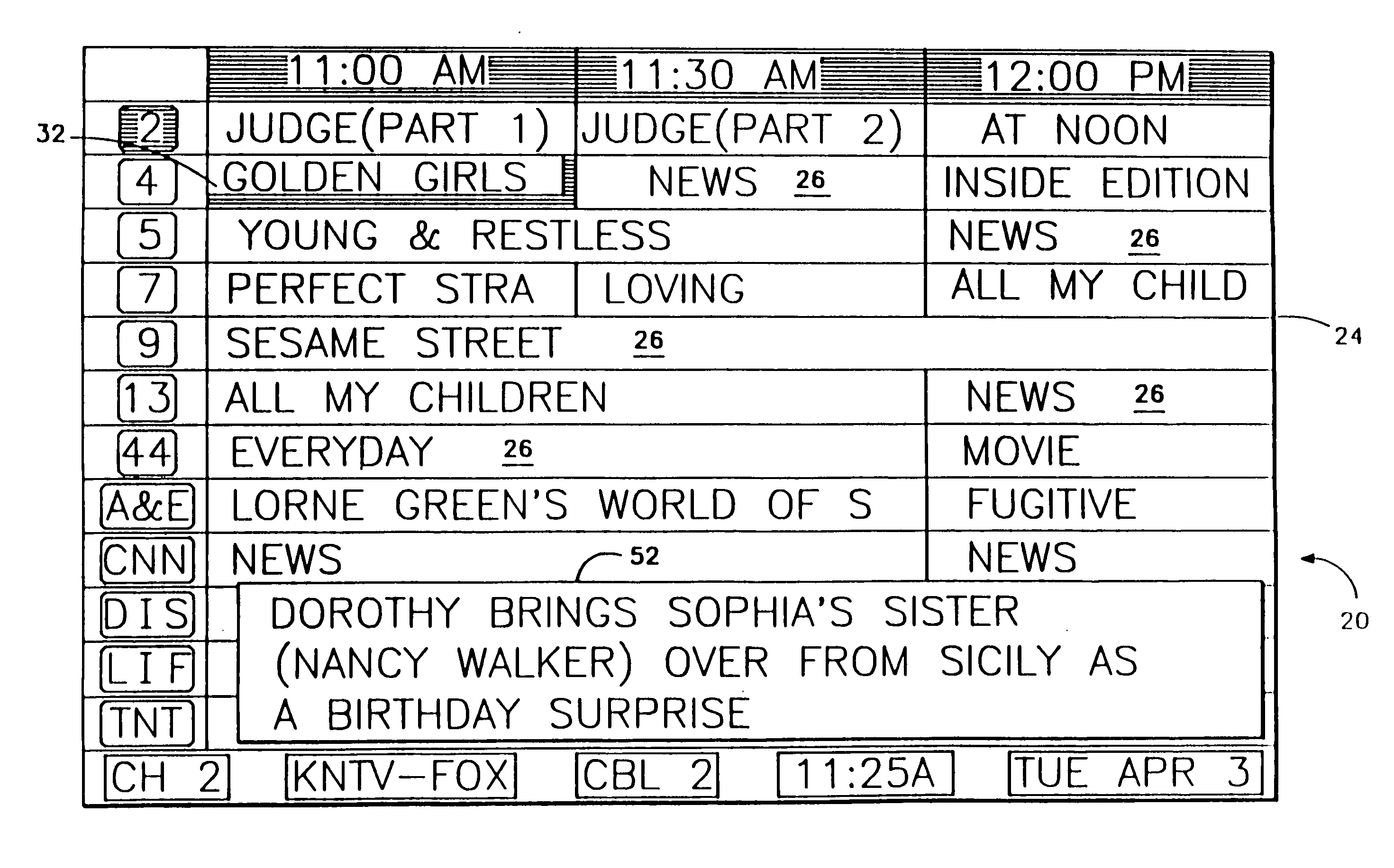Television schedule system
- Summary
- Abstract
- Description
- Claims
- Application Information
AI Technical Summary
Benefits of technology
Problems solved by technology
Method used
Image
Examples
Embodiment Construction
, taken together with the drawings.
BRIEF DESCRIPTION OF THE DRAWINGS
[0026]FIGS. 1-3 are diagrammatic representations of a television schedule grid incorporating the user interface for the system and process of this invention.
[0027]FIG. 4 is a diagrammatic representation of a screen display used in the system and process of the invention.
[0028]FIGS. 5-7 are additional diagrammatic representations of the television schedule grid incorporating the user interface for the system and process of the invention.
[0029]FIG. 8 is a flow chart for understanding the operation of the FIG. 7 diagram.
[0030]FIGS. 9-10 are additional diagrammatic representations of screen displays of the user interface for the system and process of the invention.
[0031]FIG. 11 is a flow chart for understanding the operation of the FIGS. 9-10 diagrams.
[0032]FIGS. 12-13 are diagrammatic representations of taping and tape index screen displays of the user interface for the system and process of the invention.
[0033...
PUM
 Login to View More
Login to View More Abstract
Description
Claims
Application Information
 Login to View More
Login to View More - R&D
- Intellectual Property
- Life Sciences
- Materials
- Tech Scout
- Unparalleled Data Quality
- Higher Quality Content
- 60% Fewer Hallucinations
Browse by: Latest US Patents, China's latest patents, Technical Efficacy Thesaurus, Application Domain, Technology Topic, Popular Technical Reports.
© 2025 PatSnap. All rights reserved.Legal|Privacy policy|Modern Slavery Act Transparency Statement|Sitemap|About US| Contact US: help@patsnap.com



